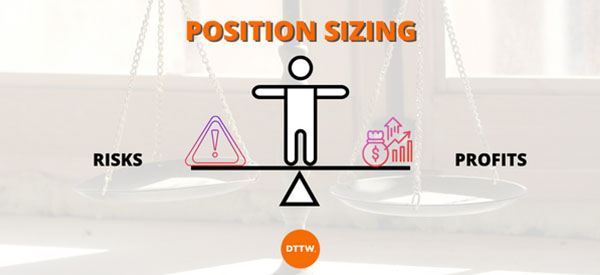Investing in the foreign exchange market means great profit potential. It deals with many currency exchanges, which makes it the world’s largest market. With this outstanding prospect, it can also welcome some risks.
Therefore, you must prepare yourself with risk management techniques to minimize losses. The two most common strategies for this are position sizing and stop losses. To know more, keep reading, as here’s everything about forex risk management.
Table of Contents
What is Position Sizing?
Position sizing is a process to decide how many units you should invest in a particular trade. It focuses on achieving a balance between risk and profit so that you can protect your investment.

There are many common ways to execute position sizing:
Fixed Percentage Method
One of the most common strategies to implement position sizing is known as the fixed percentage method. The investor will use a set percentage of capital for every trade.
This will help you set a common range for all the trades, minimizing losses. For example, 2 percent means you are choosing to lose $200 per trade or $50 at 0.5%.
Fixed Dollar Position Sizing
It’s for traders who want to have long-term investment goals. The number of trades and stop losses is set according to the capital. For example, if you have $100,000 in your account, you may split it into five trades.
Now, you have a $20,000 forex trade. Finally, you can choose the stop at a 5% loss. This means the maximum loss you take is $1,000 on any position.
Maximum Drawdown Optimized Position Sizing
This is for traders or investors who have an extensive trading history. They can evaluate the data of the last one or two years to notice the trends.
For example, if you have EURUSD for the previous two years, you can determine your losses. You may have lost 200 pips (percentage in point or price interest point.), 180 pips, and 275 pips. But the worst drawdown is 400 pips.
Finally, after discovering the worst pip, you could increase it by 50% or 100%. This will be your position size. It will help you evaluate the position size you can take on every trade. Moreover, it works best if you have similar pips in trades.
What are Stop Losses?
When you learn how to start investing, you also have to go through some strategies for the best profits. One such simple and effective strategy in forex trading is to stop losses.
Simply put, a stop-line order is executed to stop further losses. It automatically stops a trade when the market goes below a set level. It helps the traders minimize the losses, which can be humongous.
How Does Stop Loss Work?
Here are some points and steps in which stop loss works:
- A trader will initiate the stop loss by order by setting up a particular stop price. As soon as the price reaches this level, the order will stop.
- The order becomes a market order as soon as the market price hits the stop prices.
- The market order will stop at the best value.
Important note: The setting up of stop losses differs for short and long-position trading. If you have a long order, you have to set the stop price below the entry point. If the market price falls to or below the stop price, the stop loss will be initiated.
Also, if you have a short position, the stop price is above the entry price. The rate will close in this range if the market price rises to or above the stop price.
For instance, if you have USDEUR at 110.50, you could set it at 109.00. The trade will instantly close if the bid price falls at this level.
Bottom Line
The foreign exchange market is volatile and highly unpredictable. You can discover the power of RoboForex, which helps with every step of mindful investing.
Further, it would be best to implement the risk management strategies in forex for smartly placing your bids. Moreover, it helps you preserve the capital, minimize losses, and stay in the forex longer.
With some smart strategies, you can improve your skills and predictability. So go through all the strategies and study them for better results and profits.
The best option, however, is to create a risk management system that you can use as a guiding thread when trying to mitigate trading risks.
Doing this does not mean giving yourself fixed rules, like a checklist that you have to follow slavishly.
Instead, it means having a system that protects you while at the same time adapting to the situations that the financial markets put in front of you.



